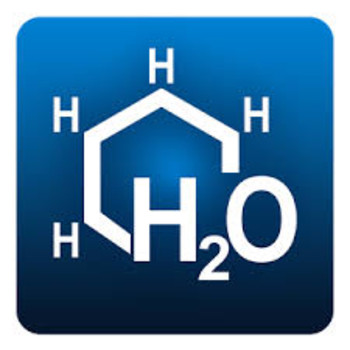What are the molarity, molality, and mole fraction of ethylene glycol (#"C"_2"H"_6"O"_2#) in an aqueous solution that contains 40 % by mass of the solute? The density of the solution is #"1.06 g/mL"#.
2 Answers
Explanation:
40% ethylene glycol means
mass of ethylene glycol =
mass of water (solvent) =
mass of solution =
1. Molality
Molar mass of ethylene glycol =
no. of moles =
Molality =
Molality =
2. Molarity
3. Mole fraction
#["C"_2"H"_6"O"_2] = "6.83 M"#
#m_("C"_2"H"_6"O"_2) = "10.741 mol/kg"#
#chi_("C"_2"H"_6"O"_2) = 0.1621#
Read further to see how it was done.
This is just an exercise in flexing the limits of what you have and calculating various types of concentrations.
The solution is aqueous, so the solvent is water, which is why the density is close to
#"% w/w" = "mass solute"/"mass solution"xx100%#
we can assume
#"40% w/w" => 0.40 = "x g solute"/"(1000 + x) g solution"#
Solving for
#0.40(1000 + x) = x#
#=> 400 + 0.40x = x#
#=> 400 = (1 - 0.40)x#
#=> x = 400/(1 - 0.40) = 666.bar(66)# #"g solute"#
Therefore, we can get the mols of solute and mols of solvent:
#color(green)(n_"solute") = (666.bar(66) "g solute")/(2xx12.011 + 6xx1.0079 + 2xx15.99"9 g/mol") = color(green)("10.741 mols ethylene glycol")#
#color(green)(n_"solvent") = ("1000 g solvent")/("18.015 g/mol") = color(green)("55.509 mols water")#
From there, we have all the info we need to calculate the concentrations.
For the molarity:
#color(blue)(["C"_2"H"_6"O"_2]) = "mols solute"/"L solution"#
#= "10.741 mols solute"/((1000 + 666.bar(66)) cancel"g solution" xx cancel"mL"/(1.06 cancel"g") xx "L"/(1000 cancel"mL"))#
#=# #color(blue)("6.83 M")#
MOLALITY
The molality was made simple because we chose the mass of the solvent to be
#color(blue)(m_("C"_2"H"_6"O"_2)) = "mols solute"/"kg solvent"#
#= "10.741 mols solute"/"1 kg water"#
#=# #color(blue)("10.741 mol/kg")#
Naturally, we chose
MOLE FRACTION
The mol fraction is:
#color(blue)(chi_("C"_2"H"_6"O"_2)) = n_"solute"/(n_"solute" + n_"solvent")#
#= "10.741 mols solute"/("10.741 mols solute" + "55.509 mols water")#
#=# #color(blue)(0.1621)#



